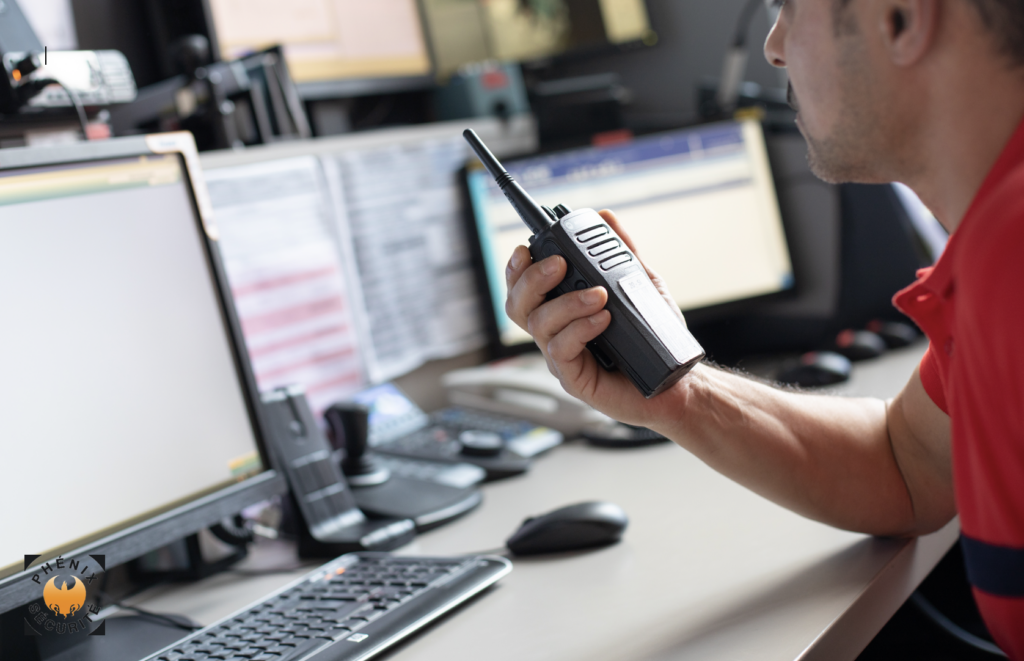What is SSIAP?
SSIAP, an acronym for Service de Sécurité Incendie et d'Assistance à Personnes, is a diploma certifying competence in fire safety. With several levels of qualification (1, 2 and 3), SSIAP trains professionals capable of preventing fire risks and providing assistance to people. Their mission is also to protect people and property.
Understand the meaning of the acronym SSIAP
SSIAP is an acronym that stands for Service de Sécurité Incendie et d'Assistance à Personnes. This term refers to a service specialized in fire prevention and assistance in the event of a problem in establishments open to the public (ERP) and high-rise buildings (IGH).
SSIAP agents are trained for several key missions:
- Fire risk prevention
- Staff training and awareness of safety rules
- Maintenance of fire-fighting equipment
They are also responsible for incident response, including alerting and accompanying emergency services.
SSIAP training is divided into three levels (SSIAP 1, 2 and 3), each corresponding to specific responsibilities and skills. For example, SSIAP 1 is for basic fire safety officers, while SSIAP 2 prepares you for the role of team leader.
The role and missions of a SSIAP agent
A SSIAP agent is first and foremost a fire prevention specialist. They must be fully conversant with current regulations to guarantee the safety of people and property.
One of his main tasks is to make regular rounds to detect any anomalies. In the event of a problem, they must know how to use fire safety equipment such as fire extinguishers and smoke detectors.
The SSIAP agent is also responsible for raising employee awareness. He organizes evacuation drills and training courses to ensure that everyone knows how to react in the event of a fire.
In emergency situations, he or she intervenes rapidly to evacuate the affected areas and welcome the emergency services. He must then provide all the information required for an effective intervention.
Last but not least, he is also responsible for complying with legal obligations and keeping the company's day-to-day records.
SSIAP 1 training: objectives and content
SSIAP 1 training is designed to equip trainees with the skills needed to ensure fire safety in establishments open to the public (ERP) and high-rise buildings (IGH). It covers several key areas:
- Knowledge of fire: understanding the behavior of fire and its consequences on buildings.
- Fire regulations: master the principles of current fire regulations.
- Safety equipment: know how to use and maintain emergency equipment such as fire extinguishers and smoke detectors.
Trainees are also trained to manage emergency situations, including alerting emergency services and evacuating occupants. They learn how to check the conformity of installations and apply safety instructions.
A medical certificate of fitness, less than three months old, is required to ensure that candidates are physically fit.
Fire safety diploma: the importance of SSIAP 1
SSIAP 1 is often the first step for anyone wishing to enter the fire safety field. This diploma gives access to the function of fire safety officer, a crucial role in the protection of property and people in establishments open to the public (ERP) and high-rise buildings (IGH).
SSIAP 1 certification is essential, as it validates the skills needed to identify fire risks and implement prevention and protection measures. Holders of this diploma are also required to undergo regular training to keep their skills up to date, including triennial refresher courses.
The duties of a SSIAP 1 agent include :
- Monitoring technical installations
- Checking safety equipment
- Raising staff awareness of fire risks
- Emergency management
This diploma is an essential prerequisite for progressing to higher levels such as SSIAP 2 and SSIAP 3.
SSIAP 1 exam: what you need to know
The SSIAP 1 exam comprises two distinct tests: a theoretical test and a practical test. The theoretical test is a 30-question MCQ, covering various aspects of fire safety and risk prevention. Candidates must obtain a minimum mark of 12/20 to pass this section.
The practical test involves carrying out a round of surveillance. During this round, candidates must identify anomalies such as badly placed fire extinguishers or obstructed emergency exits. They are also assessed on their ability to alert emergency services and apply safety instructions.
The jury is made up of a representative of the prefect, a firefighter and a fire safety service manager. Candidates can prepare for the exam by taking specific training courses and practicing with online MCQs.
Validity of the SSIAP 1 diploma and refresher courses
To maintain the validity of the SSIAP 1 diploma, refresher training is required every three years. This training allows you to update your skills and ensure that you have mastered fire safety procedures and techniques.
Criteria to be met include :
- Have worked at least 1607 hours as a fire safety officer in the last 36 months.
- Hold a valid first-aid training certificate, such as the SST or PSC1.
If these conditions are not met, a refresher course is required. This additional training enables the diploma to be reinstated after the three-year period. Agents must then take part in specific training sessions to become operational again.
Differences between SSIAP 1, 2 and 3
The differences between SSIAP 1, 2 and 3 mainly concern the responsibilities and skills required. SSIAP 1 trains fire safety officers to respond to fire incidents, evacuate people and maintain emergency equipment.
SSIAP 2, on the other hand, prepares you for the role of team leader. These professionals lead a team of SSIAP 1 agents, and are responsible for training and raising staff awareness. They also supervise security rounds and ensure that safety instructions are applied.
Finally, SSIAP 3 is designed for department heads. They manage the entire fire safety department, advise facility managers on safety measures and monitor budgets. They must also keep up to date with the latest regulations and equipment inspection requirements.
The link between SSIAP and the firefighting profession
The missions of SSIAP agents and firefighters complement and reinforce each other. SSIAP agents are often the first to intervene in the event of fire in establishments open to the public (ERP) or high-rise buildings (IGH). They take the first emergency measures, such as evacuating the affected areas and alerting the emergency services.
When the fire department arrives on the scene, SSIAP agents play a crucial role. Thanks to their knowledge of the installations and safety plans, they can guide the firefighters. This collaboration ensures a faster, more effective response.
Firefighters, whether professionals or volunteers, can also obtain SSIAP diplomas. This gives them additional specialization and makes them versatile. The reverse is also possible: SSIAP agents can become volunteer firefighters, enriching their experience and skills in fire management.
Duration of SSIAP 1 training
SSIAP 1 training lasts 67 hours. This includes both theory and practical exercises.
The courses cover various essential aspects:
- Fire behavior and its consequences
- Fire safety for public buildings and high-rise buildings
- Technical installations and emergency resources
Trainees must also learn how to carry out safety rounds and draw up fault reports.
In addition to classroom hours, practical and theoretical assessments are scheduled. These include a 30-minute MCQ and a 15-minute practical test. Candidates must pass these tests to obtain their diploma.
The maximum number of trainees per session is limited to 12, guaranteeing personalized support.



